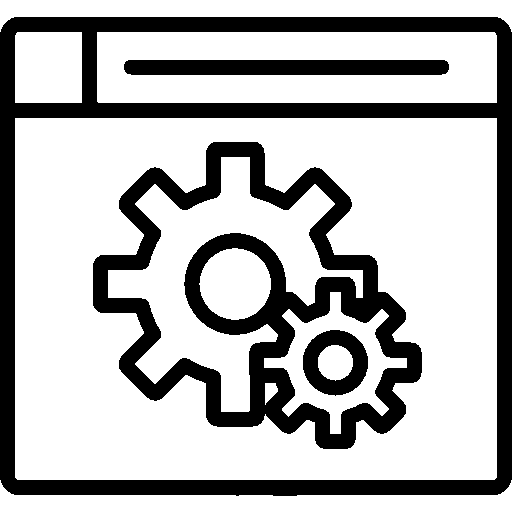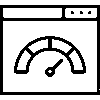- Products
- Platform
- Solutions
- Customers
- Support
 Website & Mobile & E-commerce
Website & Mobile & E-commerce
 CRM
CRM
 Operation & ERP
Operation & ERP
 Productivity
Productivity
 Support
Support
 Community
Community
 Learn
Learn
- Website & Mobile & E-commerce
- E-commerce
Features
Advanced Product Management
Add an unlimited number of groups, categories and products. Separate your sub-products with variants, use different images, and keep stock information.
Identify different brands and models. Prepare brand-specific promotions and visuals. Divide the brand's products into categories.
Parameter Usage
Easily separate your products with parameters such as product physical properties, shipping time, campaign status.
Distinguish products from others by defining characteristic parameters of the product, such as color, number, pattern.
Order Management
Define stages such as pending, financial approval, approved, etc. Manage your orders with stages.
Close or cancel open order; Transfer to delivery note, proforma, invoice; print, save as PDF or Excel.
List your orders according to your branches, review monthly branch and product analysis.
Define stages and manage incoming and outgoing return orders with stages.
Examine the product, product shipment and invoice analysis of the ordered products.
Warehouse and Stock Management
Create stock cards according to product type such as service, product, semi-finished product, raw material, etc. and add your products. Enter the numbers of blocked items on the stock cards.
Define as many warehouses as you want and add stock cards. See product transaction histories, purchase information, shelf addresses.
Create the transfer form by selecting the source type, source warehouse and target warehouse, and list the forms according to their realization status.
List open, closed and canceled shipment orders, see the warehouse name, destination and number of products.
Add the items in the counting form manually or with Excel, transfer the result to the stock automatically, and review the counting price difference report.
Examine stock value reports according to the number of purchase and sales quantities and the total price.
Store the products in your stock by dividing them into smaller units or pieces.
Price Management
Transfer prices to products by creating buying and selling price lists. Make bulk price updates.
Use the flexible pricing feature by defining different prices for sub-products.
Define different tax type, class and rate for different countries. Tax by country.
Create price lists in different currencies for visitors from different countries.
Campaign Management
Offer brand-based discounts to your customers by adding brands to your campaigns.
Customize prices by defining different campaigns for groups or categories.
Add customer groups to your campaigns. Let them benefit from special discounts.
Make price discounts for a specific customer group by defining product, brand-specific coupon codes, such as shipping discounts or discounts on the total price.
Flash Sale
Open timed campaigns with a limited number of products for your end-of-season or overstock products.
Marketing Processes
Announce your campaign announcements, promotions and innovations to your customers with E-mail marketing.
Use SMS marketing for your notifications such as campaigns, coupons, tickets, surveys.
Send campaign information or offer temporary discounts to your customers with instant notifications.
Enable your customers who have products added to their cart to continue shopping where they left off when they visit your site again.
Ensure that your emails sent automatically or manually are of high quality and standard by creating email templates.
With blog management, manage blogs by dividing them into categories, enter your content and publish it on your website.
Call center
Search Engine Optimization
You can create SEO-friendly links according to the language of your content. Creating separate links for each language will help you gain more space in Google rankings and contribute to the visibility of your site in different languages.
Customizable Design Concept
Unlimited Smart Reporting
Use predefined indicators or define personalized product indicators such as the number of monthly orders, best-selling products.
Use personalized widgets by choosing their type, color and icon.
Access product, current, order, shipment and invoice analyzes on a date basis.
Language options
Show your website in the user's language with different language options. Use Entranet in your native language.
Different Countries and Currencies
Show your website to your customer with different languages, currencies, tax rates for different countries. Let your customers see prices in the currency they want.
XML Integrations
Easily add products from supplier companies to your website and get price and stock updates.
With XML export, your customers can easily access the features, price lists, and stock quantities of your products and start selling them on their sites.
ERP Integrations
All orders you receive through your e-commerce site are transferred to the Mikro program along with product information, warehouse stock information and current account.
With Uygumsoft integration, all your information in the online sales transaction is shared with Uygunsoft simultaneously.
Sales invoices coming from marketplaces or your e-commerce site are automatically transferred to ETA with ETA integration and your products are deducted from stock.
Product orders you receive online are deducted from the stock in the Zirve program simultaneously with your website, and invoice and current information are transferred.
Cargo Integrations
With cargo integration, follow your customers' cargo processes via Entranet and keep them informed of the status of their cargo with automatic SMS notifications.
Benefit from wide cargo options thanks to our integration with the most widely used national and international cargo companies.
Marketplace Integrations
Offer your products for sale in marketplaces with your e-commerce site with marketplace integration. Manage your order from your system when you receive it.
Increase your sales chances with wide marketplace options.
Payment Integrations
Start receiving payments immediately thanks to easy integration with payment infrastructures. Sell anywhere in the world.
Benefit from different solutions and opportunities thanks to the extensive payment infrastructure.












